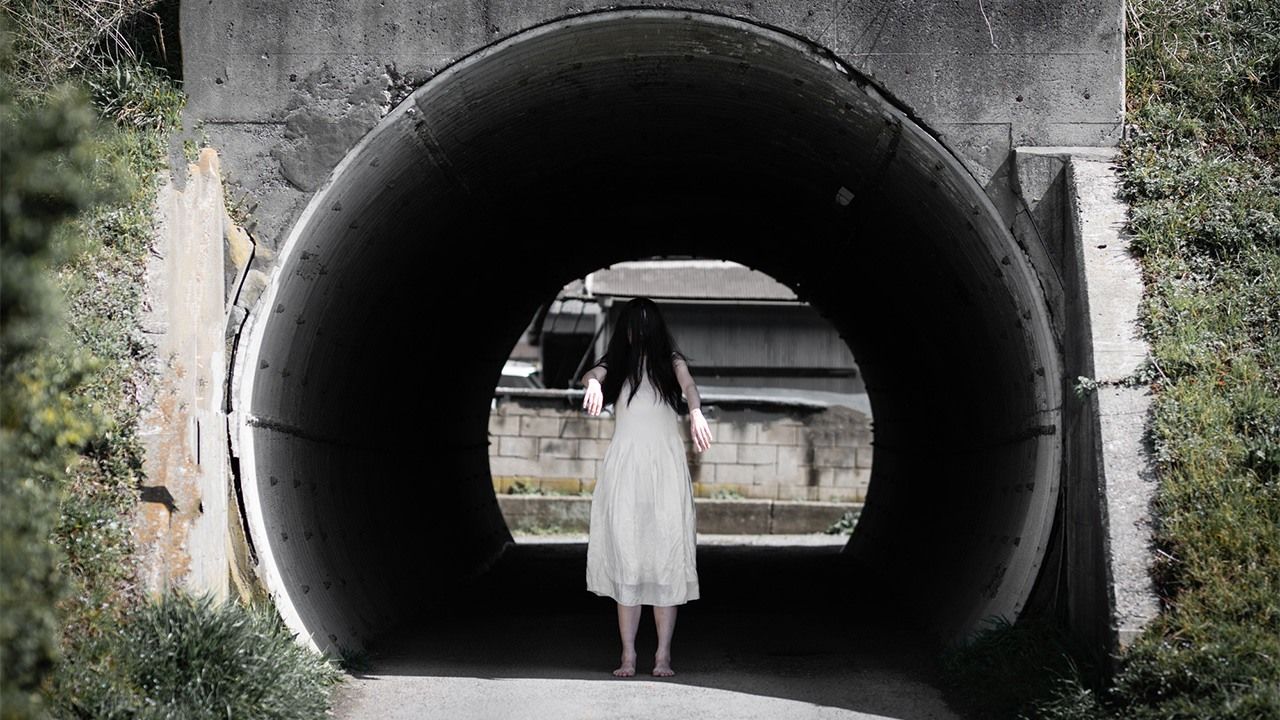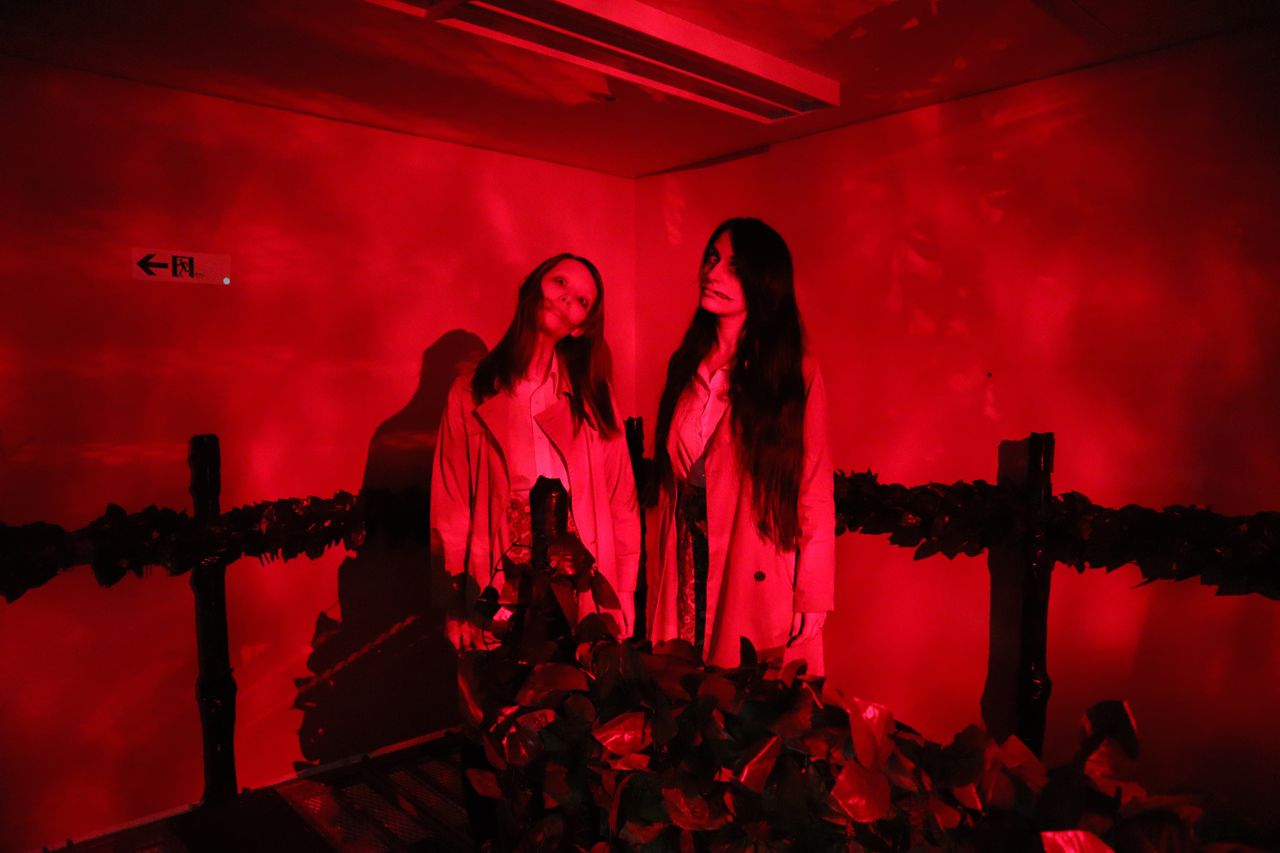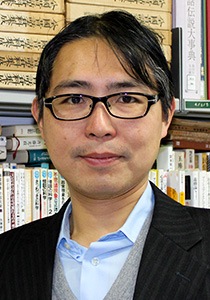
Japanese Urban Legends from the “Slit-Mouthed Woman” to “Kisaragi Station”
Society Culture- English
- 日本語
- 简体字
- 繁體字
- Français
- Español
- العربية
- Русский
A woman wearing a face mask asks a passing child, “Am I pretty?” If the frightened youngster says she is, she asks, “Even like this?” and removes her mask to reveal a face slit from the corners of her mouth to each ear. No matter their age, almost everyone in Japan has heard the story of the kuchisake onna, or “slit-mouthed woman,” and it has become increasingly well known around the world.
“The kuchisake onna must be the first purely Japanese urban legend,” says Iikura Yoshiyuki, a Kokugakuin University associate professor who researches oral literature. But how do such stories emerge and develop?
A New Monster on Japan’s Streets
Iikura offers one theory of origin for this particular legend. Around the end of 1978, a rumor circulated that an old woman in a farming family in the town of Yaotsu in Gifu Prefecture spotted a woman with the now notorious slit mouth standing in the corner of the garden. The local newspaper printed an article about the story and the legend spread and grew through repetition among the children of the area. “There were all these different variations, like they might say that she wore a mask or a red coat, or that she carried a sickle. Or they’d say that she could run a hundred meters in six seconds, that she hated hair pomade, or that if you gave her bekkōame hard candy, then you could get away . . .”
Six months later, the rumor had spread nationwide. “This was a time when the number of children going to cram schools was increasing. Before, it was rare for rumors to cross over to another school district. But cram schools brought children from different areas together, and they took the stories they heard about other schools to share them at their own. As they passed them on further to relatives and other contacts by telephone and so on, other newspapers and television stations picked up the story.”
As well as being a scary tale, for children the kuchisake onna represented the kind of characters they might encounter. “Cram schools started in the evening, and when they ended children came out in groups onto the night streets. They saw adults they had never seen before, like women going out to their nightlife entertainment jobs or drunks on their way home from the bars.” As Iikura notes, this boosted anxiety among the young students about the possible presence of people who could hurt them—an anxiety projected in the kuchisake onna.
“At first, teachers and parents were also worried, conducting patrols and arranging for children to return home in groups. The rumors died down around the start of the summer holidays in 1979. But the powerful image of the slit-mouthed woman lingered in everyone’s memories, establishing itself as another monstrous figure.”

The haunted house attraction Kyōfu no hosomichi (The Narrow Road of Terror), based around the kuchisake onna, in the Yanagase shopping arcade in Gifu, Gifu Prefecture, had five seasonal runs from 2012 to 2019. (© Jiji)
When the kuchisake onna legend spread in the late 1970s, the Japanese economy was changing as households across the country acquired the basic elements of urban cultural life: televisions, cars, and telephones.
The term “urban legend” came to Japan via a 1988 translation of American folklorist Jan Harold Brunvand’s 1981 book The Vanishing Hitchhiker. The up-and-coming Japanese researchers who conducted the translation are said to have wanted to overturn the idea in the academic world that oral literature meant only old tales and legends, and to open up the possibility of investigating the gossip and rumors of the contemporary city.
Brunvand defined the urban legend as a bizarre but believable tale in an urban setting that is said to have happened to a “friend of a friend.” A hitchhiker turns out to be a ghost, for example, or an escaped killer is hiding under the bed. The motif of a phantom passenger dates back to the era of nineteenth-century hackney coaches, but adapted itself to the age of the automobile, spurred on by the growth of the mass media. People related these stories as things they had heard from local newspaper and radio accounts; the tales took on local colors and details, traveling across the whole of the United States.
“In late 1980s Japan, there was great interest in word of mouth among young people. It became a big topic how junior high and high school students could drive major demand, whether through the lines at ice cream shops like Hobson’s and Baskin Robbins or the trend for Boston bags. If these students in the Tokyo area said something was cool, the news spread like wildfire. High school and university students had more to spend as they could get part-time jobs in newly built family restaurants and convenience stores, and with the bubble economy around the corner, even younger children had more purchasing power. Marketing departments made strong efforts to analyze what these young people were saying.”
One typical success came for Lotte with its Koala’s March cookies. A rumor among high school girls went that finding a koala with eyebrows meant it would be a lucky day, so Lotte tried various strategies, such as increasing the number of different koala designs. By doing so, it made Koala’s March a longstanding favorite, and the product marked its thirty-fifth anniversary in 2019.
“Other widespread stories included the idea that touching the fundoshi or loincloth of the traditional messenger character depicted at the time on Sagawa delivery trucks brought happiness, and that a couple who rode in a boat together on Ueno Park’s Shinobazu Pond would be sure to split up. Magazines assembled these kinds of stories into features on ‘urban legends.’” Meanwhile, the writers for these outlets worked to grow interest in the tales, such as when the magazine Popteen introduced the “human-faced dog.” This creature had the face of a middle-aged man, and could speak and chase after cars at speeds of over 100 kilometers an hour.
The boom did not last, though, Iikura explains. “These urban legends were at their peak popularity in the early 1990s before cooling off in 1995. That year’s earthquake in Kobe and sarin attacks on the Tokyo subway meant it was no longer the right atmosphere for talking about legendary monsters. The media stopped carrying stories about such supernatural occurrences.”
The Occult Online
Into the twenty-first century, urban legends resurfaced as an internet-led phenomenon. “In the first wave, television, magazines, and other media collected and highlighted rumors that began among children. In the 2000s, the rise of the blog sparked the heyday of the text-based website. Blogs that brought together urban legends drew in readers, and as their popularity led to the publication of books on the subject, they drove online and physical publishing of still more similar material. People who were students at the time the legends emerged took a nostalgic pleasure in reading them, while those who grew up later became curious to learn about them.”
Magazines and television stations also took material found on the 2channel discussion board to popularize new urban legends. Some examples that have since entered the broad popular consciousness include the ominous white kunekune seen by elementary school students in paddy fields that can cause insanity if approached too closely, the cursed kotoribako box to be filled with blood and body parts and given to the target of its magic, and Hasshaku-sama, a monstrous woman more than 2 meters tall. “Most of these are horror tales that appeared first on the Internet, where they developed into forms that were too long to be passed on orally.”
From around 2010, there have been legends created by interaction via social media. The creepy story of Kisaragi Station has developed over more than 10 years, during which time it made the leap from 2channel to Twitter. It began in 2004 with a 2channel poster who wrote, “I got on the train at Shin-Hamamatsu Station. Even though it’s the train I always use to go to work, I’ve arrived at an unstaffed station I’ve never heard of. What should I do?” The story has grown from this initial post in the form of an enquiry and the answers it attracted into an elaborate story of a sinister location existing outside of the map.
“Once they get to a certain length, somebody puts these kinds of stories on aggregator sites, and then they get shared again,” says Iikura. “Because they’re written in the form of a pseudorealistic tale from an actual narrator, it seems like you’re really there hearing a conversation. You can jump in and help build them. That’s the distinctive feature of the second wave of urban legends in the Internet age. And there are a lot of horror stories. I think people have a playful element of make-believe in mind as they contribute to creating scary tales or making references to mysterious happenings around the world.”
Compared with word of mouth, urban legends conveyed digitally tend to go to one of the two extremes, either staying completely the same or radically changing during the process. “When you pass on a story orally, you’re always going by memory, so even if there are small changes the main details stay the same. Online, you can copy and paste or transform it completely if you want. It happens instantly, and physical distance is not an issue. So the speed at which stories cross international borders has also increased.”
From around 2000, the legend of the kuchisake onna traveled overseas via the internet. It has gained new characteristics, says Iikura, such as the woman having a red mask when the story is told in South Korea. “A folklore tradition in places like Okinawa, Taiwan, South Korea, and China says that evil spirits can only travel in a straight line, so the South Korean kuchisake onna can’t turn corners or climb stairs. There’s a story that she has a slit-mouthed skinhead boyfriend who also wears a mask. When urban legends travel to cities in other countries, they can change to fit better into the local culture.”
Diminishing Interaction
In the second wave of urban legends, some entertainers have made the topic their specialty. “Seki Akio, who rose to fame in 2006, is a classic example,” according to Iikura. He got his break introducing urban legends on variety shows, and is known for his catchphrase, “Whether you believe it or not is up to you.”
And YouTube videos investigating urban legends are also winning fans. “For example, there’s a story about traveling to a different world by elevator. If you get on an elevator alone in a building with 10 or more floors and press the buttons in a particular order, it’s said to take you to another dimension. And they actually test it in the video.”
Where urban legends were once shared as if they really happened to that “friend of a friend,” they now spread more quickly and widely like the latest hit game. Yet Iikura says that the kind of legends that once appeared in front of many eyes are now diminishing in number.
“The reason for this is that people are increasingly holing up in their own corner of the Internet. There’s a noticeable trend for users of one site to move toward the same way of thinking and not to interact with those holding other opinions. Rather than discussing whether something is true or not, more people believe what they want to believe and reject what they don’t like as lies. There is not the same recognition of the fun to be found in the ambiguity between truth and fiction.”
Iikura bemoans the current popularity of political methods that project unease on real targets. “It might be aimed at illegal immigrants, China, South Korea, or Japan. The unease we project on the kuchisake onna or ghosts, on the other hand, is based on the idea that real people wouldn’t do these things. I feel that on a global scale, we’re gradually losing the ground where urban legends can arise. There’s a growing sense of helplessness, and amid a vague sense of unease, perhaps there’s a desire to cling to what is real. It seems quite ironic that more people are relying on the kind of false information and fake news that researchers would call urban legends.”
(Originally published in Japanese on December 27, 2019. Interview and text by Itakura Kimie of Nippon.com. Banner photo © Pixta.)
